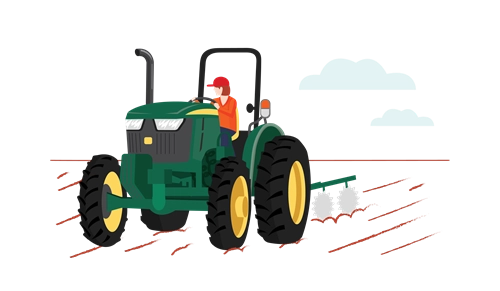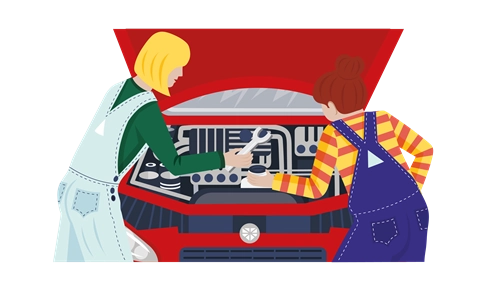-
Curriculum alignment
Years 9 and 10 Science
Year 9 Science Understanding
Multi-cellular organisms rely on coordinated and interdependent internal systems to respond to changes to their environment (ACSSU175 – Scootle)
Year 10 Science Understanding
Energy conservation in a system can be explained by describing energy transfers and transformations (ACSSU190 – Scootle)
The motion of objects can be described and predicted using the laws of physics (ACSSU229 – Scootle)
Years 9 and 10 Science as a Human Endeavour
Advances in scientific understanding often rely on technological advances and are often linked to scientific discoveries (ACSHE192 – Scootle)
Years 9 and 10 Science Inquiry Skills
Formulate questions or hypotheses that can be investigated scientifically (ACSIS198 – Scootle)
Plan, select and use appropriate investigation types, including field work and laboratory experimentation, to collect reliable data; assess risk and address ethical issues associated with these methods (ACSIS199 – Scootle)
Select and use appropriate equipment, including digital technologies, to collect and record data systematically and accurately (ACSIS200 – Scootle)
Analyse patterns and trends in data, including describing relationships between variables and identifying inconsistencies (ACSIS203 – Scootle)
Use knowledge of scientific concepts to draw conclusions that are consistent with evidence (ACSIS204 – Scootle)
Evaluate conclusions, including identifying sources of uncertainty and possible alternative explanations, and describe specific ways to improve the quality of the data (ACSIS205 – Scootle)
Critically analyse the validity of information in primary and secondary sources, and evaluate the approaches used to solve problems (ACSIS206 – Scootle)
Communicate scientific ideas and information for a particular purpose, including constructing evidence-based arguments and using appropriate scientific language, conventions and representations (ACSIS208 – Scootle)
Years 9 and 10 Design and Technologies
Investigate and make judgments on how the characteristics and properties of materials are combined with force, motion and energy to create engineered solutions (ACTDEK043 – Scootle)
- S
- T
- E
- M
Collisions and biomechanics
Years 9 and 10
Learning intentions
Students:
- connect understanding of human body systems with forces involved in a collision
- design and conduct an investigation of safety features
- explain safety features with reference to forces and energy transfers involved in a collision
- consider how scientific advances have influenced car safety engineering
- evaluate and communicate car safety features as they relate to their own body geometry.
Learning hook
-
Watch an advertisement from Volvo, introducing the 2019 EVA (Equal Vehicles for All) Initiative. You can also watch a related 'survival story'. Find more about the EVA Initiative.
- Ask students to investigate their family cars to identify as many driver crash safety features as possible, in particular, noticing what can be adjusted to accommodate different heights and body shapes. Students report back on their findings and the class compiles a list of all the identified crash safety features, noting that not all car models have the same features.
If students do not have access to a car, consider making a car available for the class to investigate.
Girls in focus
The Volvo ad demonstrates the importance of STEM communicators in industry. Many girls do not realise the diversity of roles in STEM. To emphasise this, students could discuss the role of the creative team who designed the ad and the survival story. What would they have needed to understand, not just about the STEM behind the initiative, but also about the target audience?
Learning input
-
Compare the class list of safety features to the crash protection features listed on the TAC How safe is your car? website. Students can look up a car make, model and year on the Find my car page to identify the safety features of that car.
-
Now explore the TAC Meet Graham website and find out how Australian artist Patricia Piccinini designed a body shape that could survive a crash. This lesson plan from the Road Smart Teacher Resource Toolkit (see Lesson 1, p4) guides students through an exploration of the site.
Girls in focus
Many collision resources inadvertently reinforce the idea that engineering is an exclusively male field. The Meet Graham project not only demonstrates how STEM and art can combine to provide an innovative perspective on a problem, but also demonstrates a woman making those connections.
Learning construction
-
Challenge students to design a collision safety device to protect an egg dropped repeatedly from increasing heights. In this exercise, students can explore the concept of applying a small force over a large time interval, just as seatbelts and airbags do. Provide small groups of students with ten sheets of paper, scissors and masking tape, and ask each group to use them to make an egg-protecting device. Design the experimental method collaboratively as a class and test student designs.
Students should photograph each model before the tests, predict which model will be most successful, then explain the differences in model performance with reference to design, momentum, impact force and impact time.
-
Students discuss the strengths and weaknesses of an egg as a model for a human body.
Girls in focus
Girls often do not have the technical confidence that boys have when designing engineering solutions. By using familiar materials and technologies (paper, scissors, glue) in a collaborative environment, girls can focus on the design challenge.
Learning input
The earlier video showed a whole ‘family’ of crash test dummies. However, women have a substantially higher risk of getting injured or killed in a car than men. As a class, discuss why this might be the case. (Note that ‘risk’ is not the same as actual numbers of fatalities. A study on car crashes provides an insight into how risk is calculated.)
Watch a 12-minute TEDx Talk about the development of Eva, the female crash test dummy. As a class discuss why companies may not have been using female crash test dummies. What assumptions may companies have made? What factors would influence their decision-making?
Girls in focus
The physics of collisions is often presented by male STEM practitioners, which can reinforce stereotypes that girls and women do not belong in STEM. By showing students a female STEM practitioner who is making a significant difference in the field, teachers can combat these stereotypes, while also exploring the value of diverse perspectives in STEM.
Learning construction
- Students investigate whether the safety features of their chosen car are designed for their own body geometry. The standard car crash dummy (the average male) is 1.77 m tall and weighs 78 kg. Students could ask someone of a similar size to sit in their car and investigate:
- their distance from the steering wheel
- the relative location of the headrest
- the position of the seatbelt.
How does this compare to measurements for their own bodies? Students should hypothesise the impact of these differences and research their car features to find out more.
-
Students create a simple animation to show the forces that would operate on their body in a crash. They annotate their animation to show the energy transfers and transformations that occur in a collision, noting the properties and characteristics of the materials used and how they impact on energy transfers and transformations. They demonstrate how well their car would protect their body from whiplash, and make an overall assessment of the safety of their car for their body geometry.
Girls in focus
Girls are often motivated when they can see how STEM makes a direct impact on their lives. By connecting biomechanics and engineering to their lived experience they can see the potential for these careers to make a difference.
Learning reflection
Students reflect on any assumptions they may have had about car safety design and the responsibility of car manufacturers to ensure the safety of all drivers and occupants. They consider how their understanding of the forces involved in a collision might impact their choices as drivers.
Girls in focus
Students can also be encouraged to reflect on female-centred design. One of the implications of not having equal numbers of women in STEM fields is that women’s different needs can sometimes be overlooked when companies make design decisions. Students could consider other products that don't accommodate diverse biophysical characteristics.
-
Rubric
Assessment
Packaging engineering challenge
Criteria
Beginning
Achieved
Exceeded
Explain safety features with reference to forces involved in a collision
Explains safety features with reference to force and motion. Explains safety features with reference to energy transfers and transformations, momentum, impact force and impact time. Explains safety features with reference to different features of human anatomy and how these are affected by energy transfers and transformations, momentum, impact force and impact time. Explain safety features with reference to materials used
Identifies properties and characteristics of materials that contribute to car safety features. Explains how the properties and characteristics of materials impact on energy transfers and transformations in a collision. Explains how the properties and characteristics of materials impact on energy transfers and transformations, impact force and impact time in a collision. Evaluate car safety features as they relate to their own body geometry
Identifies safety features that accommodate their body mass and geometry. Explains how safety features can be adjusted to accommodate their body mass and geometry and how this might affect their utility in a collision. Identifies the functional limitations of existing safety mechanisms for their body mass and geometry, and the potential for unintended stress caused by those features in the event of a collision. Support claims with evidence
Provides direct comparisons with a more standard body geometry. Refers to research to support claims of limited utility of some safety features. Refers to research to support claims of additional unintended stress caused by safety features in the event of a collision. Communicate ideas effectively
Creates a simple animation that shows the relative position of the body to safety features. Creates an annotated animation that shows the effect on a body in a collision. Creates an annotated animation that shows the effect on different body parts in a collision.










